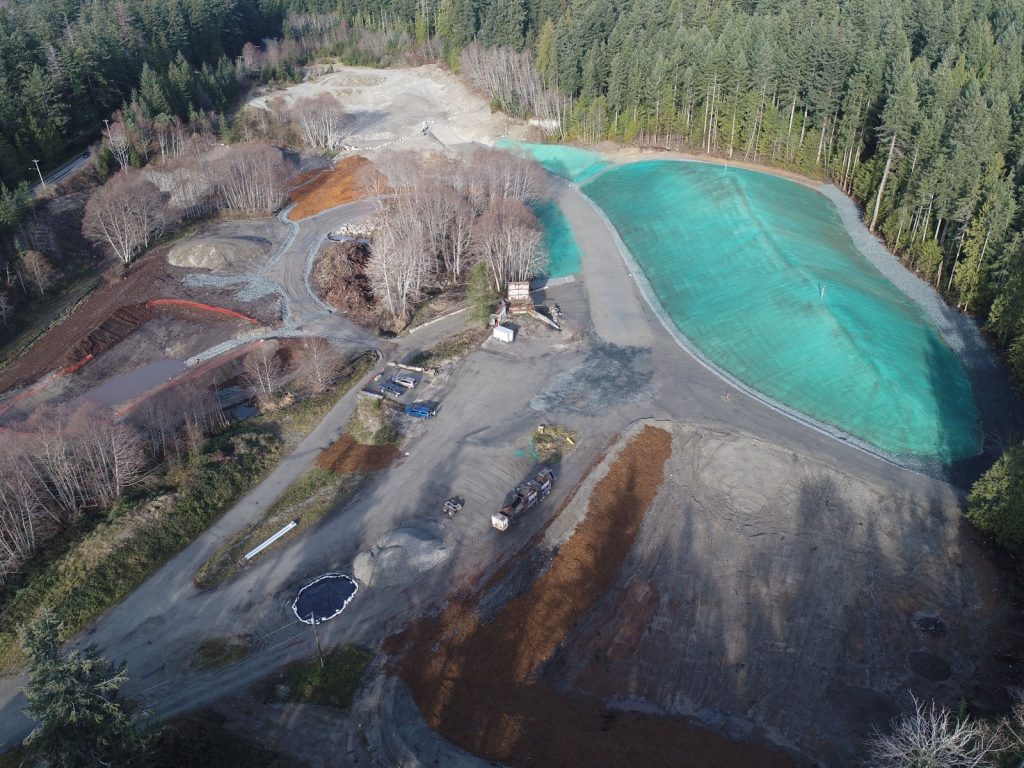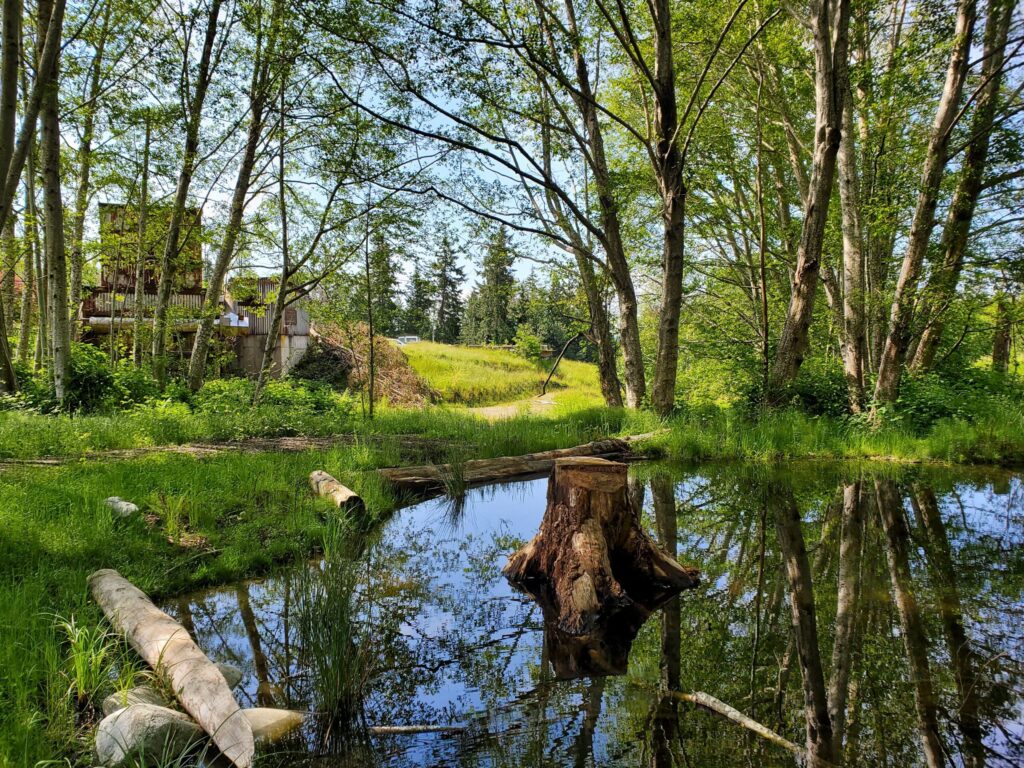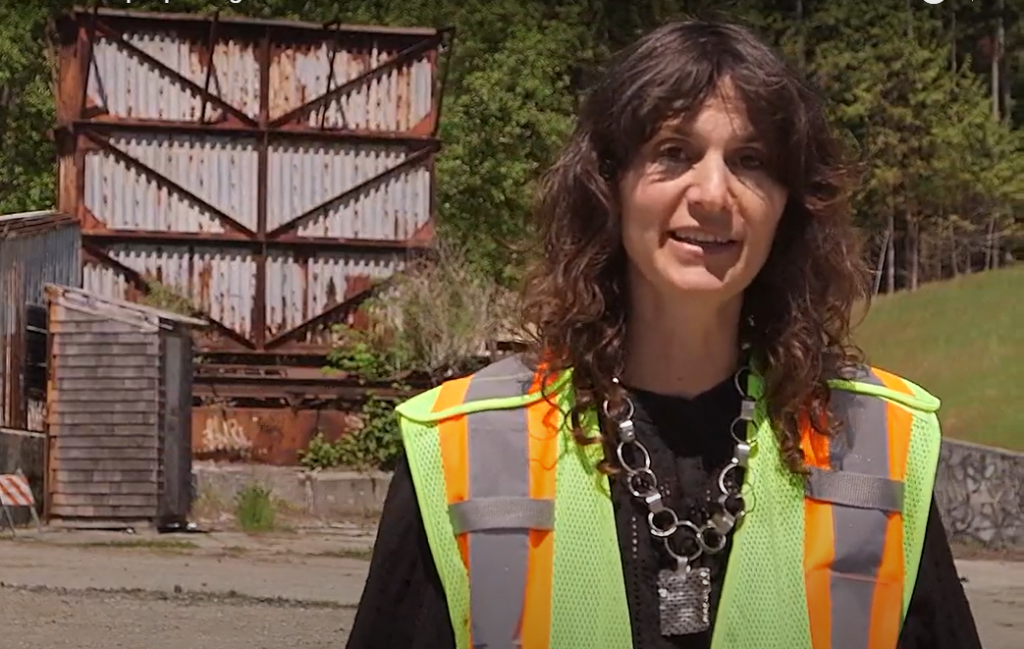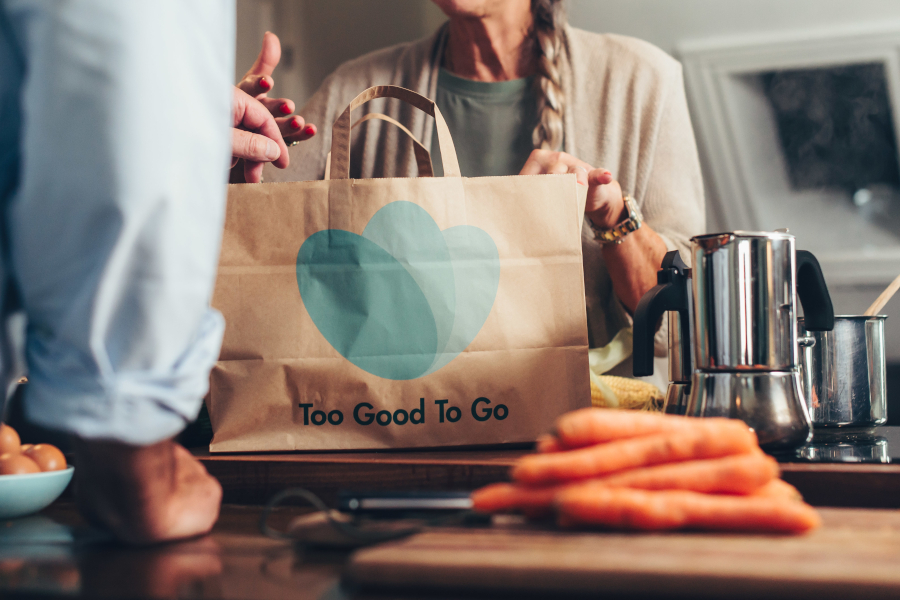The Dump – Reimagined
“Is that a bear?” Tai asked nonchalantly. I was scanning the tall hill, covered in waist-high clover, for a big lumbering figure but saw nothing. Then I caught just a head poking above the green – just like someone stood a dark-brown teddy bear amongst the tall stalks – and then another big brown body behind it – there were two bears! This tour was going to be more exciting than I was expecting.
I was at the old “dump” for the city of Powell River and surrounding qathet Regional District; it had been abandoned more than 25 years ago after the Ministry of the Environment ordered its closure. And I was with Tai Uhlmann and Abby McLennan, two members of the Let’s Talk Trash trio (which also includes Ingalisa Burns) – the driving force behind the qathet Regional District’s waste education program. I was taking a tour along with a couple of people from the City’s planning department, and we were there for a first-hand view at what transformation looks like.
The dump’s primary feature throughout its life had been the incinerator (seen in the picture above) – a harsh metal skeleton hosting a burn pit that ate everything with flames and produced smoke and ash in copious amounts. In fact, although the bears probably didn’t know it, they were hanging out on a pile of incinerated material decades in the making. It wasn’t just a pile though – the material had been moved there, sculpted into a hill, capped with a non-porous membrane, covered with layers of gravel from on-site, and finally blanketed in more than a meter of soil and seeded with clover. If that sounds to you like a design to meet many objectives at once – preventing future contamination, using local materials, building habitat for wildlife (from bees to bears), and creating a beautiful view for humans – you’re right.

This aerial photo from 2020 shows the basic layout of the qathet Resource Recovery Centre. The “bear hill” is on the right and the old incinerator is approximately in the centre. Photo Credit: Jordan Enns, Effective UAV Solutions.
From Waste to Resource
The site is in the midst of a transformation to the qathet Resource Recovery Centre (RRC) thanks to the qathet Regional Board and staff with help from the Let’s Talk Trash team. This dream team successfully acquired six million dollars in federal grant funding to complete the project with support from the Tla’amin First Nation and the City of Powell River. The first two of three phases have been completed and phase three is underway.
“I want people to walk into that facility and feel inspired,” said Tai. How can trash be an inspiration, you might ask? The vision of the RRC calls for a fundamentally different approach to our waste – from a liability to an asset, from a problem to a solution.
For example, in phase two of the construction, the qathet Regional District’s primary goal was to reuse as many materials left behind on the site as possible. Abandoned tires built retaining walls; retired telephone poles became parking barriers; chunks of concrete and asphalt were ground into material for trail surfaces; old train rails and dimensional wood became bridges connecting the trails; and left-over woody material was spread to make the floor for a forest to come. All of these materials moved hundreds of meters instead of hundreds of kilometres, as is common in construction today, and therefore avoided the emission of greenhouse gases (GHGs) – perhaps in the tonnes.
Beyond just Reusing Materials
The qathet Regional District’s vision for the RRC, however, goes way beyond just materials. What impressed me the most is that the team took a multi-perspective approach and it shows in every aspect of the whole project. The qathet Regional District’s goal of Zero Waste is taken as an opportunity not just for materials but also for a new relation between people and the Earth. This approach is a part of the new circular economy.
The dump is the quintessential eyesore, but the new RRC is meant to be a beautiful habitat for all kinds of life, including people. After the incinerated material had been moved to build the bear hill, some small natural springs were revealed and so the construction team rebuilt the small stream that presumably used to flow along the western edge of the site. With an extra berm built with left-over logs, the treed area next to the pond is now slated to be an outdoor education centre, not surprisingly focused on compost; the berm itself is compost in action! Overall, four-thousand trees have been planted on the site so far, heralding the return of the forest. The qathet Regional District received the Provincial UBCM Community Excellence Award in Asset Management for its incorporation of natural assets in stormwater management at the site.

This photo from my visit shows a natural pond and wooded area; the old incinerator is in the background on the left and the new education centre will be located next to the pond on the right side.
In addition to the natural beauty, humans are taking an active part. The Let’s Talk Trash Team reclaimed metal and glass from the waste piles so that local artists can craft new jewellery, create sculptures, and design signage that will be on display at the RRC. They also collected old pieces of solid incinerated material – it’s amazing what fire can do with a mix of materials – are they destined for a history display? With a bit of touch-up, the sediment pond (used during construction to keep water clean) became a natural amphitheatre – perhaps destined to host concerts, who knows? The local symphony conductor has already visited! Jewellery, history, music – the arts will be alive and well here at the dump “reimagined.”

Tai Uhlmann of the Let’s Talk Trash team shows off a necklace by local artist Teresa Harwood-Lynn made from reclaimed materials from the site; the old incinerator is in the background.
Stewardship in a Circular Economy
The multi-perspective approach is best understood in what we’re now calling the circular economy. The Ellen Macarthur Foundation is leading the intellectual revolution that brings us closer to this new model. The circular economy goes way beyond recycling materials into eliminating pollution, taking care of people, creating value in the economy, regenerating nature, and even fighting climate change.
I see that the RRC is not only an example of how we take care of our waste – the focus is “zero waste” but it’s so much more than that. It’s an example of how we take care of the Earth and how we take care of each other – the very definition of stewardship. It’s an integrated vision that just happens to focus on our outputs, which are no longer just labelled waste; they are resources ready for their next round in the cycle of the circular economy.
Phase three of the project – the final construction – has begun and the team expects completion in the first half of 2024. Expect more posts here as the construction goes on; I’m excited to watch the transformation as it continues.
In the mean time, the qathet Regional District and the Let’s Talk Trash team will continue to act as stewards for the site – both in terms of planning and hands-on work. Tai and Abby had their loppers on our site tour, cutting down the invasive plants as we walked and embodying their principles in action.
In parting, I ask you to think about what the circular economy – this new vision of stewardship – means to you. The Let’s Talk Trash team is certainly an inspiration to us. Here at the Recycling Council of BC, we spend a lot of time thinking about how materials can be recycled, reused, and repurposed and answering the public’s questions about these same topics. If you have questions, you can get in touch with our Environmental Advisors or visit our FAQs for the latest info about what’s happening at RCBC and across the zero waste and circular economy sectors.
